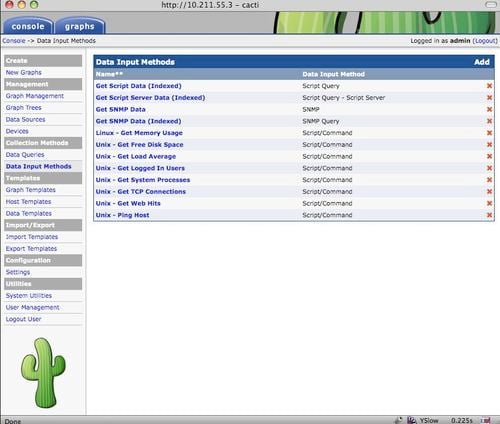In Chapter 4, we learned about the data input method. Here, we'll learn to create data input methods. Data input methods are the basic system that Cacti uses to collect data for generating graphs.

In the above figure, we can see the list of input methods that come with Cacti. For most small networks, you don't need to add or create a custom data input method. For larger networks, writing your own data input method may help you as then, you have more control over your graph.
For example, a web server administrator might want to know how many Apache child processes are running. With Cacti, you can show the number of processes on a device without adding any new data input methods. However, if we want to count the instances of a particular process, one option is to create a new data input method. In the following example, we will assume that the process is on the local Cacti box.
To do this, we will use a Perl script. First, create a file called num_process.pl in the Cacti script...



